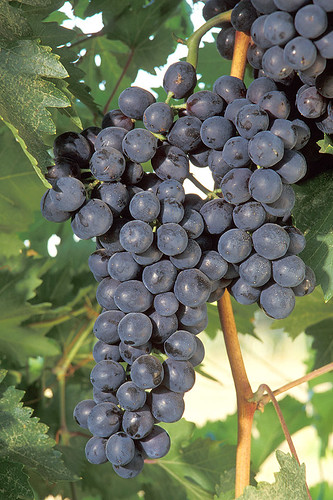
This post is part of the Science Tuesday feature series on the USDA blog. Check back each week as we showcase stories and news from USDA’s rich science and research portfolio.
When it comes to grapes, there’s a New World-Old World dichotomy. Grapevines originating in the Americas (e.g. Vitis labrusca, Vitis riparia) can resist pests and diseases, but they generally don’t have the taste or aroma of grapes with European origins (Vitis vinifera). But European grapes are more susceptible to pests and disease.
Grape breeders try to combine the best of both worlds, but here’s the problem: if you cross one grape with another, there is no guarantee your progeny will inherit the desirable traits. And because it takes so much time to grow a grapevine, produce grapes from those vines, and for those grapes to be evaluated, bringing a new grape to market can take 20 years or more. Scientists can speed things up by identifying genes that give grapes the right blend of the best characteristics. Identifying the genes will tell you the characteristics of the vine without having to wait for it to grow.
VitisGen, a project partially funded by USDA’s National Institute of Food and Agriculture Specialty Crop Research Initiative, is helping scientists pick up the pace. The $9 million project, which is supported with matching grants from the grape industry, brings together scientists from 11 research institutions across the United States. They’re focused on improving the tools and processes used in traditional breeding. As part of the project, scientists at Cornell University, South Dakota State University and the USDA Agricultural Research Service operate three “Phenotyping Centers,” where breeders can send vine samples for laboratory evaluations and genetic analyses. Breeders usually send samples from “families” of 100 to 200 vines, and each center is equipped to screen one of three key traits: fruit quality, cold tolerance or resistance to powdery mildew.
The project started in 2011 and is slated to run until 2016. In its first two years, scientists have created the largest genetic database for any specialty crop in the United States, according to Lance Cadle-Davidson, the USDA-ARS scientist who helps oversee the effort. They have developed genetic fingerprints of 8,000 grapevines, identified 1.2 million DNA markers and discovered linkages between these markers and the traits. These discoveries make it faster and easier for breeders to identify vines combining the most desirable traits.
